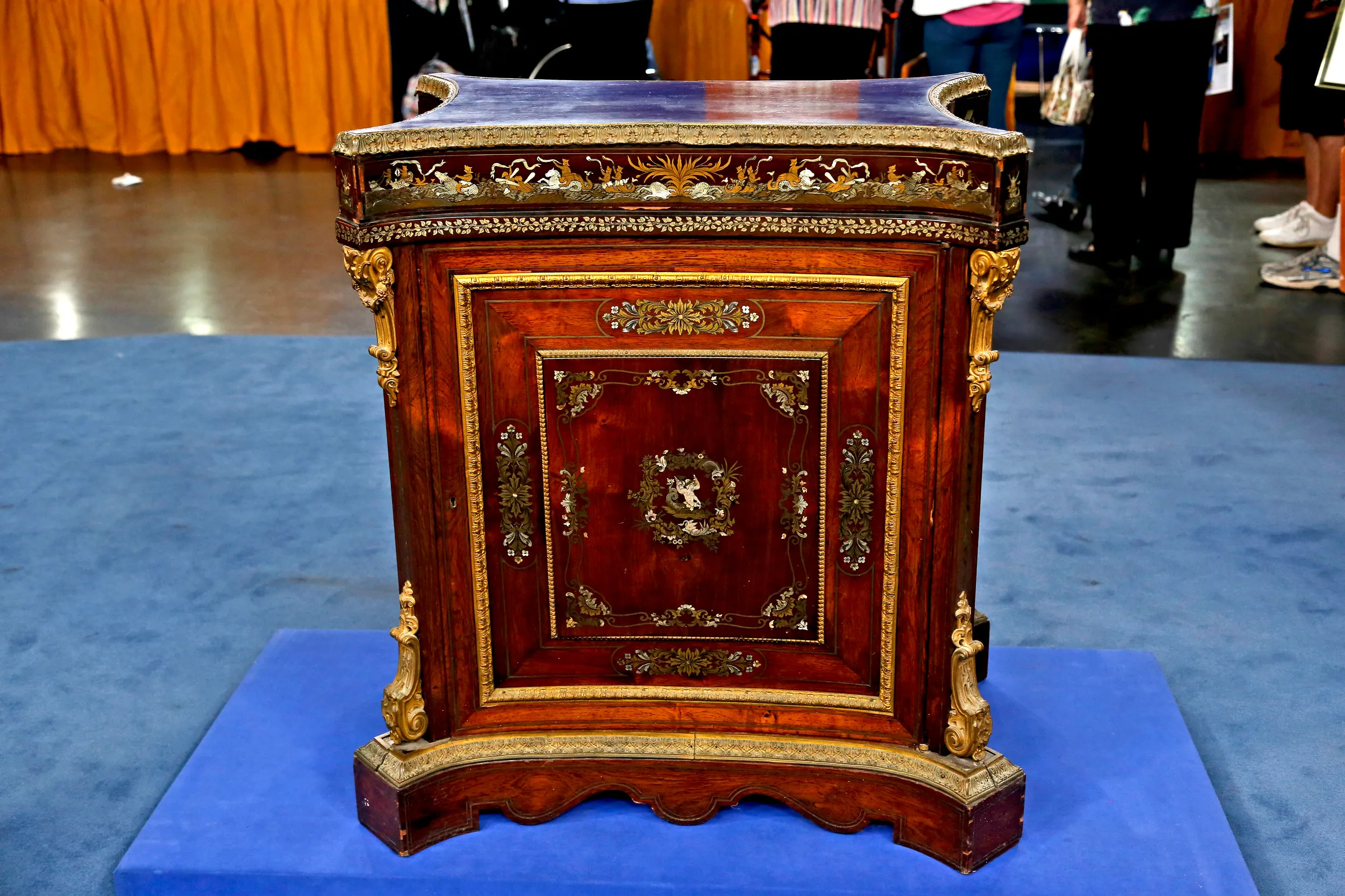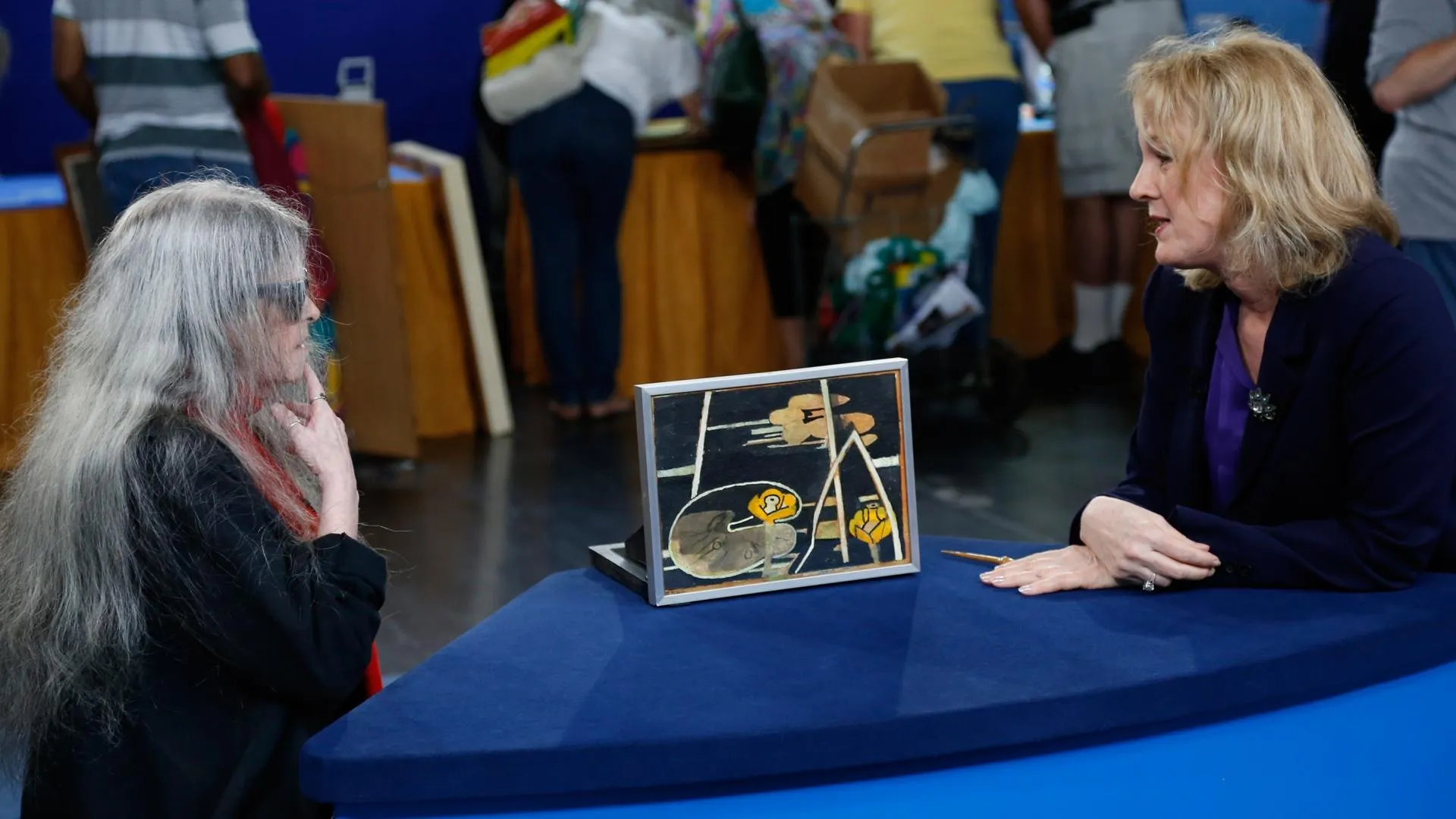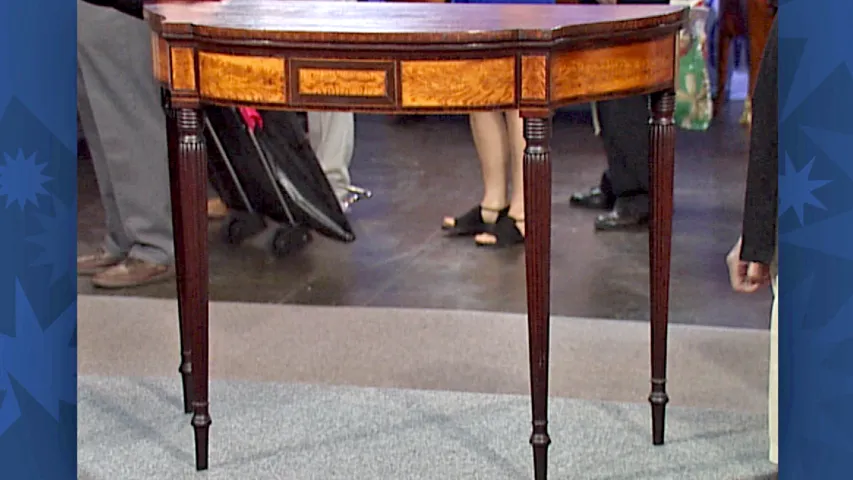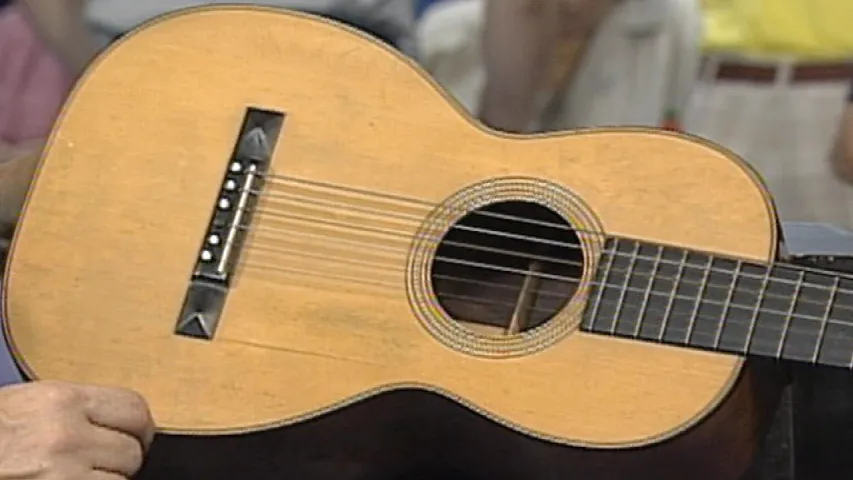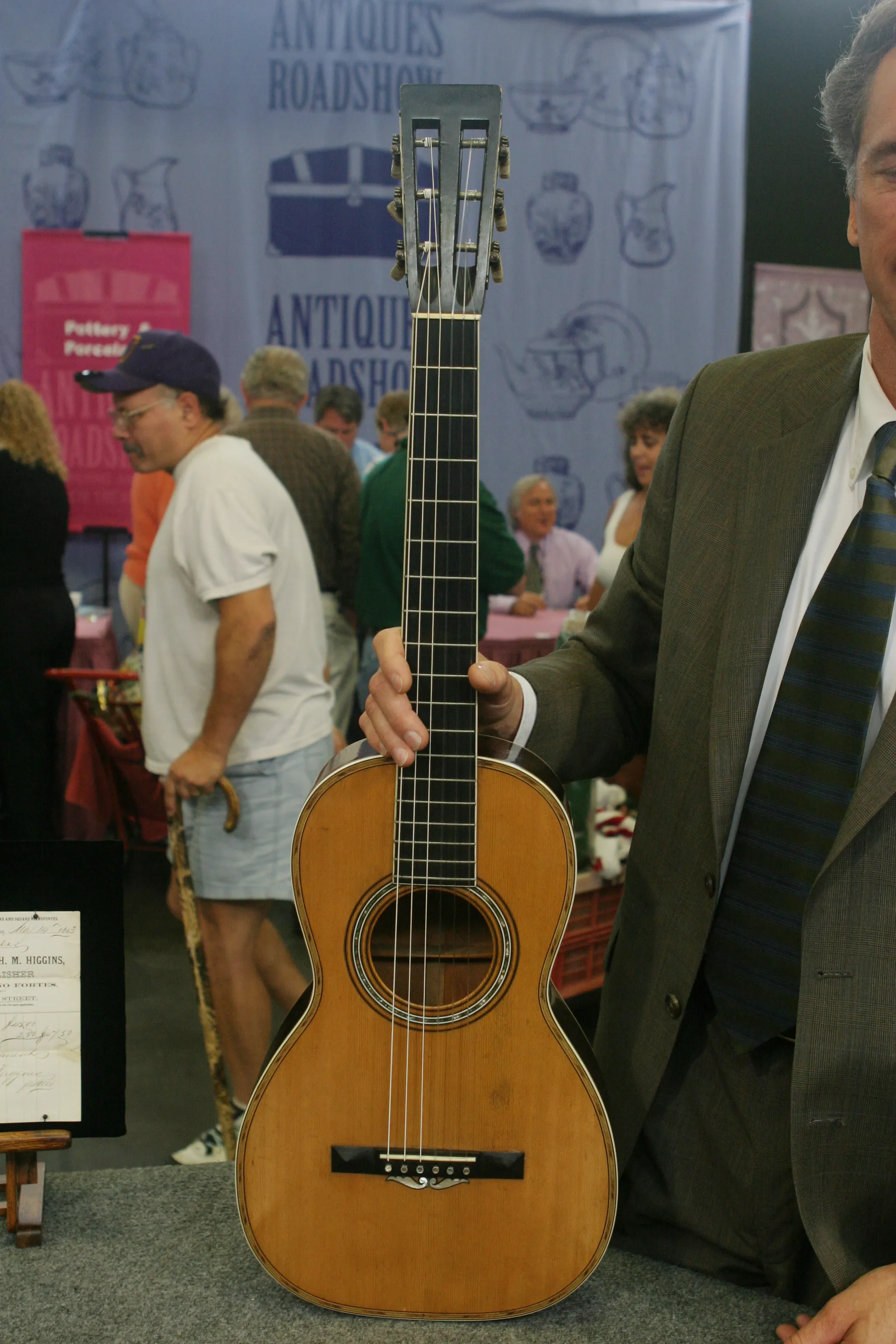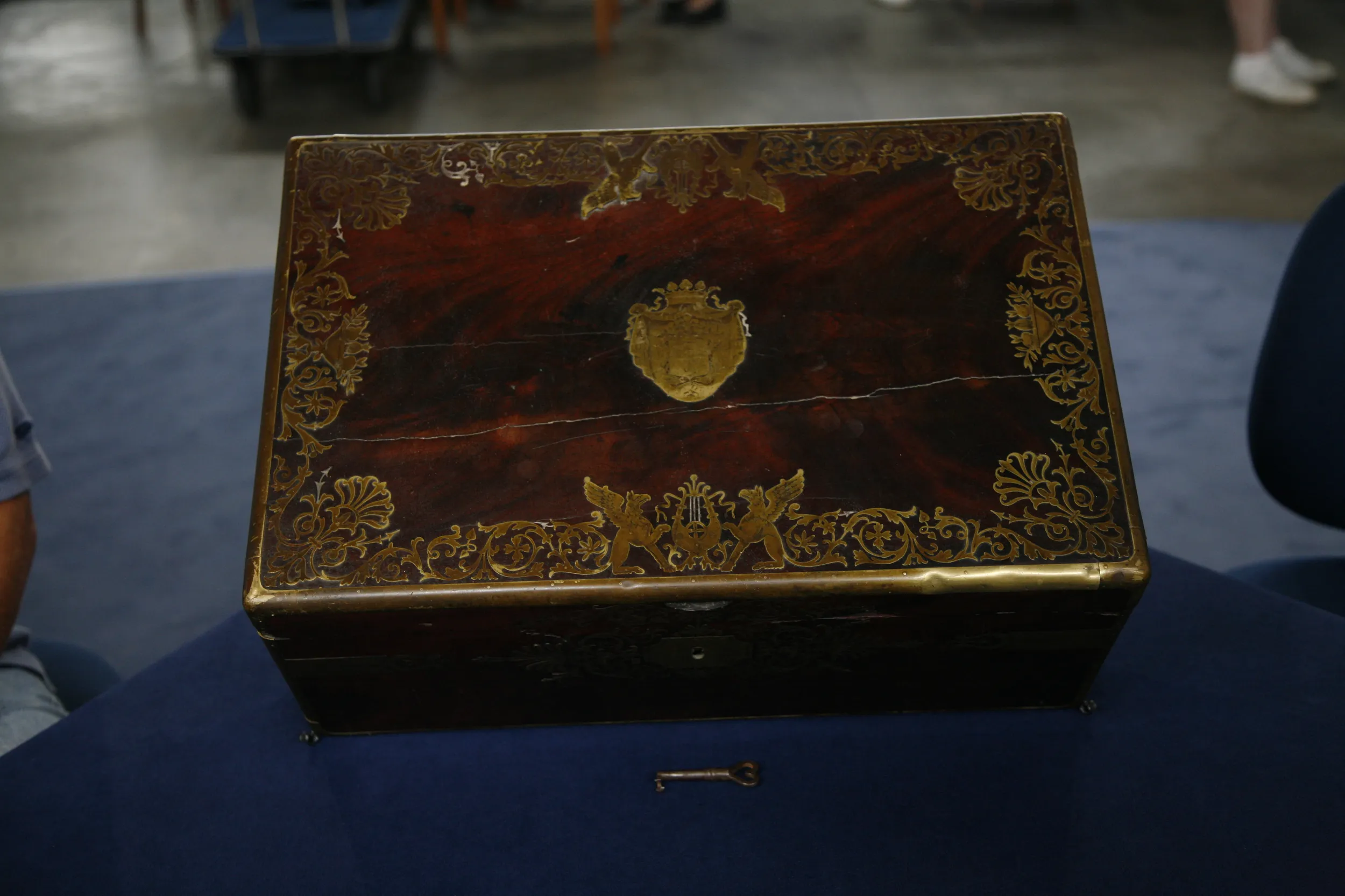GUEST: Well, I brought a piece of furniture that was in a house that my parents purchased in 1963. It's right by the Griffith Park. In fact, they bought the house from the Griffith family. And when they purchased this house, this piece, along with a lot of other furniture, was part of the purchase price of the house.
APPRAISER: Well, when we analyze a piece of furniture, we look at it from a number of angles: the condition, provenance, craftsmanship and rarity. This piece in particular was meant to be shown in the round. It's finished on every side. The rosewood top is inset with this cast brass molding. Elaborate inlay of mother-of-pearl. Brass and pewter above a band of floral pewter inlay on top of a single door with, again, a very elaborate inlaid panel. And this door opens and it's storage. Yes, which is interesting that it's cedar-lined. I've been trying to think of why one would need cedar lining in a formal piece of furniture.
GUEST: Yeah, for clothing, maybe?
APPRAISER: You would think, but I would think that this is a very formal piece of furniture. It would have sat in a living room or parlor.
GUEST: Right.
APPRAISER: So, we haven't come up with any conclusions on that. The primary wood is rosewood, and rosewood gets its name from the aroma that it sets off when it's being cut. It's in the Napoleon III style, or the Empire style, and it's a French cabinet, and it represents that era in 1852 to 1870 where you have these guild-trained craftsmen, old-school ways of cabinet making, mixed with the Industrial Revolution, where you have all these technological advances. In an auction setting today, we would estimate it at $2,000 to $4,000.
GUEST: Wow, that's great.

